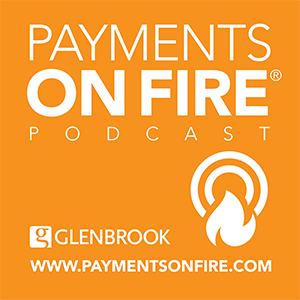As a social scientist by training, I’m fascinated with how ideas gain (or fail to gain) traction. In payments, there seems to a set of essential elements that are required for a new option to reach the level of traction. In no particular order, these elements include ease of use, ubiquity, security, and attractiveness. How these elements are acquired is the $64 million question. And yes, there is an international angle here. The recent announcement by a Swedish company about enabling QR code solutions for small businesses caught my attention and I reached out to learn more.
Stockholm-based Seamless announced the “SEQR Mobile POS” as a low-cost payment solution for small businesses. SEQR uses a proprietary QR code reader that gives a unique code to each individual merchant or to each cashier (in cases where the merchant is not a sole proprietor). “SEQR”, by the way, is pronounced “secure”.
How does it work? At the time of payment, the customer scans the seller’s unique QR code into her phone and then the SEQR application asks the customer to validate the amount and enter her PIN code into the phone to authorize the payment. In the background, Seamless authenticates that the QR code has SEQR content, gets the amount due from the merchant or cashier, validates that the customer has sufficient funds and then waits for the correct customer PIN code to finalize the transaction.
To make this happen, the customer has to enroll in SEQR, as must the merchant. So far, this sounds similar to solutions in the market being offered by Paydiant, LevelUp, Square Wallet, etc. The difference is that SEQR is funding the transaction through the consumer’s bank account, instead of through a credit or debit card. (Some of these other solutions offer bank account funding as an option, but are modeled primarily on cards).
This type of solution is pretty easy to use for both the consumer and the merchant. SEQR emphasizes security protection for the consumer: with no QR code on the consumer’s phone, the consumer is protected from security concerns that the QR code would contain malware. Additionally, no payment data resides on the phone.
In a recent phone interview, Seamless’ Lan-Ling Fredell noted that they will offer to link directly to the customer’s DDA account to fund transactions via a connection with the customer’s bank, which would allow payments to be made at a much lower cost compared to card transactions. As well, by linking to the bank, the merchant is assured that the customer has good funds. SEQR is promising in this case to cut merchant fees to at least half of what the charge would be with cards. This emphasis on bank transfers makes sense for Seamless: Northern European consumers are known for their adversity to credit cards and associated fees. Their payment usage is heavily weighted toward bank transfers.
SEQR hopes to get banks to offer the service to their customers. Of course, using banks as a channel partner in the U.S. market isn’t easy to do. But I can see at least two advantages for banks here: first, this approach emphasizes the importance of the bank, rather than a card network brand. And secondly, a Durbin-challenged bank might find that these transactions, without card network assessments, are at least competitive, cost-wise, with a debit card funded transaction – and preferable to their customer using some other issuer’s credit card for their transactions.
In working directly with banks rather than through the ACH network, SEQR is forging a path similar to Dwolla. While Dwolla does not use QR codes, they are seeking to lower costs at the point of sale. Customers can load funds into a Dwolla account and pay by mobile at the cashier. In this sense, the SEQR and Dwolla models shine in terms of efficiency but both face a long journey given the vast number of banks in the United States.
A second hurdle will be to get merchants and consumers to change their existing payment patterns. In both cases, overcoming these challenges means overcoming significant inertia and entrenched business practices. But there is evidence that change is underway. Not only are some of the startups mentioned above citing interesting adoption figures, there are also longer-standing programs for bank debits with evidence of adoption.
Safeway’s experience here in the U.S. has had some success in linking payment at the checkout to a consumer’s bank account. Their Fast Forward set up only requires you to scan your card with a unique identifier code (or enter your phone number) and then to enter your PIN number. The consumer also gets coupon discounts – but these discounts are tied to the loyalty program identification, not to payment method – in other words, Safeway also allows the customer to get the coupons but still pay with his credit card. The debit version of Target’s REDcard is also interesting, and reportedly has had success – the program provides a 5% savings on purchases and allows you to get cash back at the store.
As mentioned, the SEQR solution is similar to that being offered by Paydiant, LevelUp, Square Wallet and others, except that these solutions generally link to both credit and debit cards. Of course, LevelUp is also known for offering merchant discounts or reward for shopping there. LevelUp is already in the market and Paydiant is currently being tested by large institutions, including Bank of America. A larger point here is that these models are beginning to gain traction. SEQR does have the ability to incorporate coupons or rewards into the service as well as P2P payments.
Most other payment-related use cases with QR or code based readers have to do with bill payment, generally with the invoice statement in front of the consumer at home opening the mail or reviewing bills on-line. Two recent offerings here by doxo and imingle allow you to pay your bills with your smart phone.
Seamless is not a new entrant to the payment space. In 2000 they launched a hub for mobile top-up transactions that links MNOs to merchants and the phone owner at channel points including ATM, POS, and on-line. This solution is used in 25 countries around the world and the company boasts that they process 2.4 billion transactions per year. And the SEQR solution is already being used in Sweden by a handful of merchants including the country’s third largest grocery store.
The company also hopes to bring the solution to the U.S. market. The question is whether the U.S. mobile payment market is ready to move beyond credit card acceptance. The solution is easy to use, secure, and has attractive elements but neither the mobile payment method or the QR technology is ubiquitous. Will the merchants’ desire to pay less for being paid and the consumers’ mantra that payments should be free move us toward this type of solution?
I love the frequent flyer miles accrued by using my Delta rewards credit card and I certainly don’t envision ever giving it up. But I would also love to help merchants, especially the smaller shops that I visit, to lower their costs. Okay, maybe this is not a big behavioral change since those shops probably don’t take my Amex anyway. At the same time, I would not be giving up payment-related rewards or discounts because I wasn’t getting those either from the merchant.
I know there will be plenty of opinions about this so let’s hear what you have to say! What would it take for you to switch?




